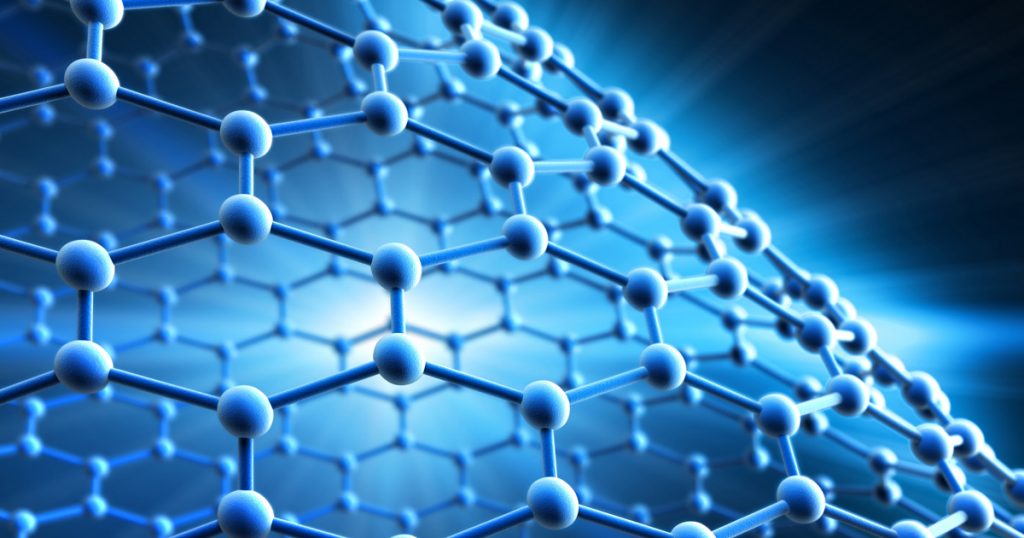What is Graphene
WHAT IS GRAPHENE?
Graphene was first observed in electron microscopes in 1962 supported on metal surfaces. It was rediscovered in 2004 by Novoselov and Geim. They were awarded the Nobel Prize in Physics 2010 “for groundbreaking experiments regarding the two-dimensional material graphene”. Since 2010, graphene has attracted a growing interest for many applications.
Graphene comprises carbon atoms that are bonded together in hexagonal patterns. Mono-layered and double-layered graphene is so thin that it can be considered a two-dimensional material. Graphene’s flat honeycomb pattern gives it many amazing characteristics. It is one of the strongest, lightest, most conductive, and transparent materials. The single layers of carbon atoms provide the basis for many other materials. Graphene oxide (GO) is an oxidized graphene derivative, which is less expensive and easier to produce. Graphene cannot be used as a separation membrane being hydrophobic and impermeable to water. The more hydrophilic GO serves as a basis for nano-membranes impermeable to impurities, salts, or bacteria but permeable to water.
Graphene is an amazing conductor of electricity and far superior to any other material currently been used. Graphene conducts electricity better than copper. Graphene can also be used as a thermal conductor or insulator depending on the orientation of the graphene. Imagine a piece of paper made from graphene lying on a table. Graphene in this orientation allows heat to quickly move across it. Stand the paper upright and the graphene resists heat transfer.
Anything made from graphene would be more lightweight. Cars made from graphene would be able to travel 2-3 times further on the same amount of energy. Clothing could also be made from graphene. They would be very lightweight, breathable, and more resistant to wear and tear.
Batteries could store up to 10 times more energy and charge 5 to 10 times faster. This would allow manufacturers to power larger things like cars, trucks, and even planes. Because graphene can be both transparent or opaque it could become a durable replacement for glass. Graphene is an amazing discovery that has the possibilities to change the future of technological advancements
Graphene’s properties
Graphene is the thinnest material known to man at one atom thick, and also incredibly strong and is about 200 times stronger than steel. On top of that, graphene is an excellent conductor of heat and electricity and has interesting light absorption abilities. It is truly a material that could change the world, with unlimited potential for integration in almost any industry.
- Hexagonal 2-Dimensional Layers one Atom Thick
- Very Hard and Strong
- Extremely Lightweight
- Malleable/Adjustable
- Conductor of Heat and Electricity
- Insulator of Heat and Electricity
- Transparent or Opaque
- Environmentally Friendly
Potential applications
Graphene is an extremely diverse material, and can be combined with other elements (including gases and metals) to produce different materials with various superior properties. Researchers all over the world continue to constantly investigate and patent graphene to learn its various properties and many applications.
GRAPHENE STRUCTURE

